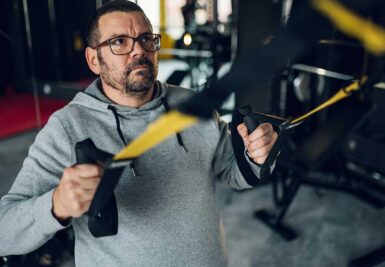THIS POST IS PART OF THE ULTIMATE GUIDE TO BACK PAIN RELIEF
An extension fracture pattern is a kind of spinal fracture that happens when the small bones in your spine, called your vertebrae, separate from each other because they were extended too far. This usually occurs in head-on car collisions.
Anatomy
The spine is made up of 24 bones, called vertebrae, which are stacked on top of one another. These bones connect to protect the spinal cord. The seven small vertebrae that begin at the base of the skull and form the neck comprise the cervical spine.
Your spinal cord and nerves travel through the spinal canal carrying messages between your brain and muscles. The intervertebral discs between your vertebrae are flexible, flat and round discs and are about a half-inch thick. They act as shock absorbers when you walk or run and allow motion between the vertebrae.
What causes a fractured vertebra?
Extension fractures are caused by head-on car collisions. When you are wearing a seatbelt and your upper body is thrown forward and your lower body stays in the same place, your vertebrae may separate and fracture.
If your injury involves your vertebrae separating completely or falling from its place, you may need immediate treatment since your spinal cord might be injured.

What does a spinal fracture feel like?
If your spine is fractured, you are going to feel moderate to severe back pain. If your spinal cord is injured as well, you might experience additional symptoms.
- Numbness
- Tingling
- Weakness
How is a spinal fracture diagnosed?
To determine whether you have an extension fracture, your physician will ask you for a complete medical history, have you describe your symptoms and conduct a physical examination. An X-ray or MRI may be necessary to confirm the diagnosis and determine if there are other problems.
How long does it take for a spinal fracture to heal?
You can be treated both surgically and non-surgically for a spinal fracture. Non-surgical treatment is considered if your vertebrae are able to fit back together using a brace or a cast and do not affect your spinal discs. Within 6 to 12 weeks, your vertebrae should be back in place and bracing will be no longer necessary.
Surgical treatment is usually needed if your fractured vertebrae fall through your spinal cord, there is damage to the ligaments or if your spine is unstable.
Can an extension fracture get worse?
An extension can get worse if it’s not treated right away. There are also some complications that can occur during treatment. Many of the complications come from immobility if you are forced to wear a brace or cast for weeks at a time. Non-surgical complications include:
- Pelvis and leg blood clots
- Pulmonary embolism
- Pneumonia
- Pressure sores
Sometimes when you need spinal surgery for your fracture, complications can occur. Complications are rare and your surgeon will talk to you about the risks involved preceding your surgery.
- Bleeding
- Infection
- Spinal fluid leaks
- Instrument failure
Learn more about back pain treatment at OrthoIndy.
Schedule an appointment
Your well-being is important to us. Click the button below or call us to schedule an appointment with one of our orthopedic specialists. If your injury or condition is recent, you can walk right into one of our OrthoIndy Urgent Care locations for immediate care. For rehabilitation and physical therapy, no referral is needed to see one of our physical therapists.





